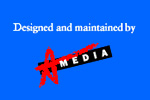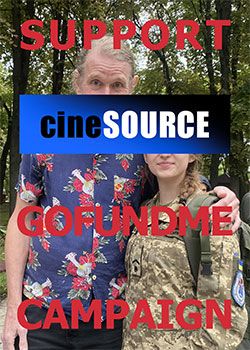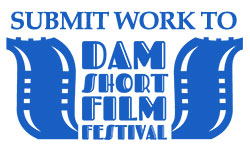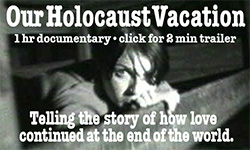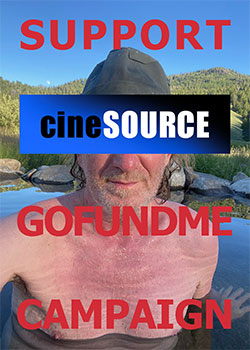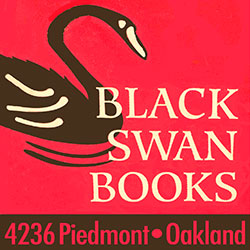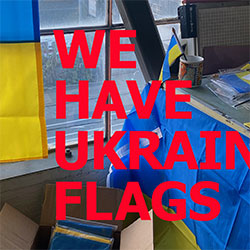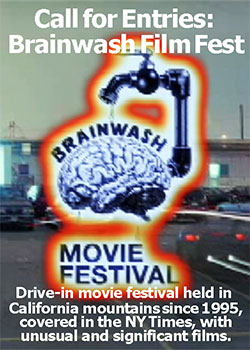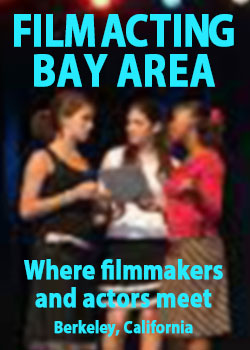Tales of Post Past
by Michael Pickman-Thoon
Please support our stories by liking articles—thanks!
I recently met a young director who was surprised to hear how many large post houses once thrived in and around San Francisco. You might remember these late, great facilities: One Pass, Western Images, Varitel, Positive Video, SFPG, On Tape, Realtime, PVR, and Television Associates. Ever wonder what happened to all those catchy names? (Apologies to any shops left off the list.)
After working at a New York City facility called Tape House (also no longer with us), I moved to San Francisco in 1982. My first job here was at Television Associates; a year later I was on staff at One Pass, and I've worked in post ever since. I got to know each of those memorable Reagan-era post facilities - as a job seeker, as a freelancer, or as a client.
Since 1988, I've been an editor at and co-owner of Rough House. Roger Krakow and I started out with a pair of used 3/4" Sony BVUs for offline editorial, or rough cutting: hence, 'Rough House.' Over the years Rough House grew, moved to the Presidio, and became a full-service HD facility.
Today, Video Arts is the only other large post house in the city. Most other local facilities went the way of the dinosaurs due to competition from LA, major shifts in video technology, the investment required for High Definition, and downturns in the local economy for the film, advertising, and dot-com sectors. Recent lowered costs for robust computer power, storage, and professional apps (particularly Avid, Final Cut Pro, and After Effects) enabled the trend of smaller editorial boutiques and in-house post operations.
When the big post houses ruled, from the late 1970s through the early 90s, broadcast-quality post-production was neither simple nor inexpensive. Online editing required Ampex one-inch VTRs, Grass Valley switchers, Sony timebase correctors, CMX edit controllers (Toggle the I-squares!), ADO digital effects, Chyron character generators - and teams of engineers armed with scopes and tweakers to keep it all running. Facilities also featured computer graphics systems (Quantel, Aurora and Dubner), Convergence offline rooms, Rank Cintel film-to-tape suites, and audio sweetening.
One of the first local video companies was Television Associates, a Mountain View house founded in the early 70s by Ed Carlstone. TVA grew to offer on-line editing, duplication, a production department with a soundstage, remote production trucks, and even equipment sales. Jim Rolin started his career as a midnight dubber at TVA. "The EPIC on-line edit system was developed there by Larry Seehorn," Jim recalls. "He taught me how to edit with it, and my very first job was an eyeball surgery video."
Steve Michelson also started as an editor at TVA, manually pre-rolling two-inch quad tapes on the RCA TR-22. By achieving frame-accurate results every time, he earned the nickname Stevie One Pass. Much later, Michelson revealed, "My secret was masking tape."
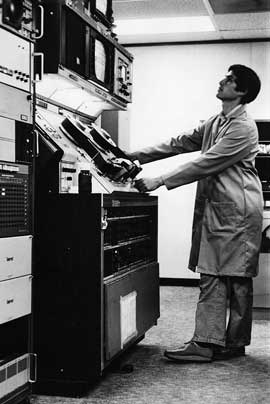 For many, One Pass Film & Video in the China Basin was San Francisco's finest graduate school. Rolin was the first employee when One Pass was created in 1975 by Michelson and Buck Lindsay. They were soon joined by Michelson's brother-in-law, Taylor Phelps, as well as engineer Tom Werner (who helped develop the CMX-50 editor and Intelligent Interfaces). Scott Ross became president of OPV, then moved on to ILM - later co-founding Digital Domain. "Taylor Phelps made One Pass what it is was and all that it stood for," says Ross. "His spirit and energy attracted so many talented people."
For many, One Pass Film & Video in the China Basin was San Francisco's finest graduate school. Rolin was the first employee when One Pass was created in 1975 by Michelson and Buck Lindsay. They were soon joined by Michelson's brother-in-law, Taylor Phelps, as well as engineer Tom Werner (who helped develop the CMX-50 editor and Intelligent Interfaces). Scott Ross became president of OPV, then moved on to ILM - later co-founding Digital Domain. "Taylor Phelps made One Pass what it is was and all that it stood for," says Ross. "His spirit and energy attracted so many talented people."
One Pass introduced many new technologies to Bay Area clients, including two early non-linear random-access edit systems. The CMX-600 stored b & w video on disc arrays the size of washing machines, while the Montage Picture Processor previewed edits with 18 chasing Betamax machines. Graduates from One Pass include feature film editors Jim Haygood and Glen Scantlebury.
Positive Video, opened by siblings Lindsay and Jim Lautz in 1981, became the second high-end facility in town (though it was actually located in Orinda). Positive, renowned for cutting edge technology and the ultra-refrigerated MCR, competed heavily with One Pass - and a great scandal of the era was the defection of Positive's senior editor Miodrag Certic to China Basin as One Pass tried to fight the competition.
Roger Krakow wore many hats at Positive (including tape op, editor, colorist, and Paintbox artist), recalls, "Unlike One Pass, Positive was post-production only, so producers didn't feel like they were bidding against their post house to get work. I think this was a key to their success, and for a long stretch the shop was booked 24 hours a day, 7 days a week. The location was a bit of a problem, but the Lautz brothers sent limos to pick up agency clients in the city."
San Francisco Production Group was launched as a full-service post house in the early 80s by Joel Skidmore, Jeff Cretcher, and Peter Takauchi. The SFPG building on Bryant Street is now home to a collection of companies, including Elastic Creative, Milomix, and Sirius Sound. Ron Colberg, SFPG senior editor from 1986 to 1998, says, "SFPG was a rare combination of innovative technology and talented individuals who, I might add, worked in a real family atmosphere. It was among the first to offer computerized design and production, the first Avid on the West Coast, a pioneer in SGI platforms for post-production and design, and one of the first to branch into a new medium that we now call 'interactive.'"
Varitel Video was led by Art Porter and John Cheney. The facility at 350 Townsend had a circular staircase descending to edit rooms for cutting TV news magazines. Varitel expanded into a luxurious full-service shop on the north waterfront. Blake Padila started as a tape op and became senior post producer, staying with Varitel 14 years. "The best part about working there was the variety of projects we worked on - from corporate to commercials, music videos, features, and docs. Varitel was one of the few facilities that provided all the services that people needed. It was the last of the big facilities in SF, and I remember that time fondly."
After One Pass/Editel-SF was destroyed by fire in 1992, Western Images emerged as a leading high-end facility. Michael Cunningham, Michele Acosta, and Jonathan Keaton purchased the first Quantel Harry and transformed the in-house studio of Western Temporary Services into a cutting-edge effects house. In 1993 Western premiered the first Flame in the US, operated by one of its developers, Simon Mowbray.
Todd Lindo, who was a producer there for seven years, remembers, "We became known for creative cutting, 3D animation and design direction, in addition to our established base of telecine and compositing. It was exciting to apply these disciplines to everything from national commercials to music videos and broadcast packages."
The 90s were a boom time, as other local houses (including On Tape, Realtime, and Pacific Video Resources) all grew and posted work for ad agencies and corporate clients, developing their own niches in the process. Print ads from those years show that facilities were constantly touting their latest and greatest technology, such as Kaleidoscope, D-1, Abekas, Axial, and daVinci. In those pre-Google days, a poster-sized promotional map allowed clients to search for local facilities, and our team felt that we had really arrived the first year the Rough House logo landed on the big map.
No discussion of post-production in San Francisco would be complete without including Buena Dela Cruz, who has worked the front desk at several facilities and is currently with Radium. The 'infamous' Buena has the uncanny ability to identify voices on the phone, even if she hasn't spoken to the caller in years. "I've always had that talent; it's weird," she says. "It really trips people out!"
As we celebrate our twentieth anniversary this month, people often ask: How has Rough House survived? Mostly, we've tried to adopt the best qualities we found at all these other facilities - offering full post services (and new services based on client demand), building a team with passion for solving creative challenges, not competing with our clients, giving great customer service, creating a family-like atmosphere, and carefully investing in the best new technology (as well as continuing Taylor Phelp's tradition of the surprise destination holiday staff party).
The 1980s and 90s were certainly the heyday of the big post facilities in San Francisco, but an even wider range of projects is being created by many of the same producers, editors and artists who continue to work around the Bay Area. All of us who worked in the big post houses share a special camaraderie and pride that is unique to each of those inventive companies.
Michael Pickman-Thoon can be reached at - and donations to Brennan and Jae's colleges funds are always appreciated. Posted on Oct 02, 2008 - 10:38 PM
by Michael Pickman-Thoon
Please support our stories by liking articles—thanks!
I recently met a young director who was surprised to hear how many large post houses once thrived in and around San Francisco. You might remember these late, great facilities: One Pass, Western Images, Varitel, Positive Video, SFPG, On Tape, Realtime, PVR, and Television Associates. Ever wonder what happened to all those catchy names? (Apologies to any shops left off the list.)
After working at a New York City facility called Tape House (also no longer with us), I moved to San Francisco in 1982. My first job here was at Television Associates; a year later I was on staff at One Pass, and I've worked in post ever since. I got to know each of those memorable Reagan-era post facilities - as a job seeker, as a freelancer, or as a client.
Since 1988, I've been an editor at and co-owner of Rough House. Roger Krakow and I started out with a pair of used 3/4" Sony BVUs for offline editorial, or rough cutting: hence, 'Rough House.' Over the years Rough House grew, moved to the Presidio, and became a full-service HD facility.
Today, Video Arts is the only other large post house in the city. Most other local facilities went the way of the dinosaurs due to competition from LA, major shifts in video technology, the investment required for High Definition, and downturns in the local economy for the film, advertising, and dot-com sectors. Recent lowered costs for robust computer power, storage, and professional apps (particularly Avid, Final Cut Pro, and After Effects) enabled the trend of smaller editorial boutiques and in-house post operations.
When the big post houses ruled, from the late 1970s through the early 90s, broadcast-quality post-production was neither simple nor inexpensive. Online editing required Ampex one-inch VTRs, Grass Valley switchers, Sony timebase correctors, CMX edit controllers (Toggle the I-squares!), ADO digital effects, Chyron character generators - and teams of engineers armed with scopes and tweakers to keep it all running. Facilities also featured computer graphics systems (Quantel, Aurora and Dubner), Convergence offline rooms, Rank Cintel film-to-tape suites, and audio sweetening.
One of the first local video companies was Television Associates, a Mountain View house founded in the early 70s by Ed Carlstone. TVA grew to offer on-line editing, duplication, a production department with a soundstage, remote production trucks, and even equipment sales. Jim Rolin started his career as a midnight dubber at TVA. "The EPIC on-line edit system was developed there by Larry Seehorn," Jim recalls. "He taught me how to edit with it, and my very first job was an eyeball surgery video."
Steve Michelson also started as an editor at TVA, manually pre-rolling two-inch quad tapes on the RCA TR-22. By achieving frame-accurate results every time, he earned the nickname Stevie One Pass. Much later, Michelson revealed, "My secret was masking tape."
 For many, One Pass Film & Video in the China Basin was San Francisco's finest graduate school. Rolin was the first employee when One Pass was created in 1975 by Michelson and Buck Lindsay. They were soon joined by Michelson's brother-in-law, Taylor Phelps, as well as engineer Tom Werner (who helped develop the CMX-50 editor and Intelligent Interfaces). Scott Ross became president of OPV, then moved on to ILM - later co-founding Digital Domain. "Taylor Phelps made One Pass what it is was and all that it stood for," says Ross. "His spirit and energy attracted so many talented people."
For many, One Pass Film & Video in the China Basin was San Francisco's finest graduate school. Rolin was the first employee when One Pass was created in 1975 by Michelson and Buck Lindsay. They were soon joined by Michelson's brother-in-law, Taylor Phelps, as well as engineer Tom Werner (who helped develop the CMX-50 editor and Intelligent Interfaces). Scott Ross became president of OPV, then moved on to ILM - later co-founding Digital Domain. "Taylor Phelps made One Pass what it is was and all that it stood for," says Ross. "His spirit and energy attracted so many talented people." One Pass introduced many new technologies to Bay Area clients, including two early non-linear random-access edit systems. The CMX-600 stored b & w video on disc arrays the size of washing machines, while the Montage Picture Processor previewed edits with 18 chasing Betamax machines. Graduates from One Pass include feature film editors Jim Haygood and Glen Scantlebury.
Positive Video, opened by siblings Lindsay and Jim Lautz in 1981, became the second high-end facility in town (though it was actually located in Orinda). Positive, renowned for cutting edge technology and the ultra-refrigerated MCR, competed heavily with One Pass - and a great scandal of the era was the defection of Positive's senior editor Miodrag Certic to China Basin as One Pass tried to fight the competition.
Roger Krakow wore many hats at Positive (including tape op, editor, colorist, and Paintbox artist), recalls, "Unlike One Pass, Positive was post-production only, so producers didn't feel like they were bidding against their post house to get work. I think this was a key to their success, and for a long stretch the shop was booked 24 hours a day, 7 days a week. The location was a bit of a problem, but the Lautz brothers sent limos to pick up agency clients in the city."
San Francisco Production Group was launched as a full-service post house in the early 80s by Joel Skidmore, Jeff Cretcher, and Peter Takauchi. The SFPG building on Bryant Street is now home to a collection of companies, including Elastic Creative, Milomix, and Sirius Sound. Ron Colberg, SFPG senior editor from 1986 to 1998, says, "SFPG was a rare combination of innovative technology and talented individuals who, I might add, worked in a real family atmosphere. It was among the first to offer computerized design and production, the first Avid on the West Coast, a pioneer in SGI platforms for post-production and design, and one of the first to branch into a new medium that we now call 'interactive.'"
Varitel Video was led by Art Porter and John Cheney. The facility at 350 Townsend had a circular staircase descending to edit rooms for cutting TV news magazines. Varitel expanded into a luxurious full-service shop on the north waterfront. Blake Padila started as a tape op and became senior post producer, staying with Varitel 14 years. "The best part about working there was the variety of projects we worked on - from corporate to commercials, music videos, features, and docs. Varitel was one of the few facilities that provided all the services that people needed. It was the last of the big facilities in SF, and I remember that time fondly."
After One Pass/Editel-SF was destroyed by fire in 1992, Western Images emerged as a leading high-end facility. Michael Cunningham, Michele Acosta, and Jonathan Keaton purchased the first Quantel Harry and transformed the in-house studio of Western Temporary Services into a cutting-edge effects house. In 1993 Western premiered the first Flame in the US, operated by one of its developers, Simon Mowbray.
Todd Lindo, who was a producer there for seven years, remembers, "We became known for creative cutting, 3D animation and design direction, in addition to our established base of telecine and compositing. It was exciting to apply these disciplines to everything from national commercials to music videos and broadcast packages."
The 90s were a boom time, as other local houses (including On Tape, Realtime, and Pacific Video Resources) all grew and posted work for ad agencies and corporate clients, developing their own niches in the process. Print ads from those years show that facilities were constantly touting their latest and greatest technology, such as Kaleidoscope, D-1, Abekas, Axial, and daVinci. In those pre-Google days, a poster-sized promotional map allowed clients to search for local facilities, and our team felt that we had really arrived the first year the Rough House logo landed on the big map.
No discussion of post-production in San Francisco would be complete without including Buena Dela Cruz, who has worked the front desk at several facilities and is currently with Radium. The 'infamous' Buena has the uncanny ability to identify voices on the phone, even if she hasn't spoken to the caller in years. "I've always had that talent; it's weird," she says. "It really trips people out!"
As we celebrate our twentieth anniversary this month, people often ask: How has Rough House survived? Mostly, we've tried to adopt the best qualities we found at all these other facilities - offering full post services (and new services based on client demand), building a team with passion for solving creative challenges, not competing with our clients, giving great customer service, creating a family-like atmosphere, and carefully investing in the best new technology (as well as continuing Taylor Phelp's tradition of the surprise destination holiday staff party).
The 1980s and 90s were certainly the heyday of the big post facilities in San Francisco, but an even wider range of projects is being created by many of the same producers, editors and artists who continue to work around the Bay Area. All of us who worked in the big post houses share a special camaraderie and pride that is unique to each of those inventive companies.
Michael Pickman-Thoon can be reached at - and donations to Brennan and Jae's colleges funds are always appreciated. Posted on Oct 02, 2008 - 10:38 PM













